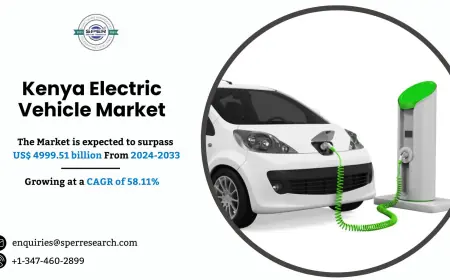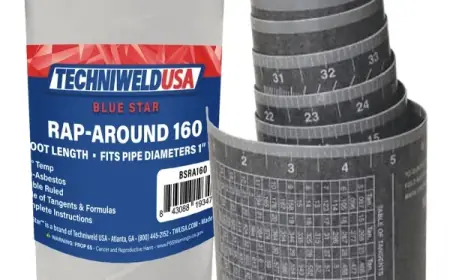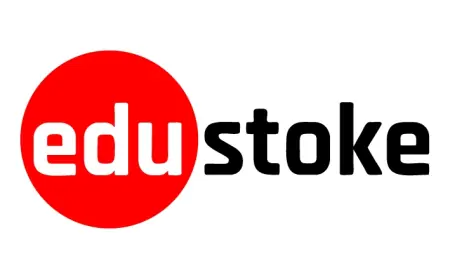Cellulose Fibers Market Growth, Industry Share, Trends Analysis, and Forecast 2025-2033
Asia-Pacific currently dominates the market, holding a significant market share of over 38.5% in 2024, due to its strong textile industry, high production of raw materials like wood pulp, and growing demand for sustainable fabrics. Leading manufacturers and cost-effective production further strengthen the region’s market position.

According to the latest report by IMARC Group, titled “Cellulose Fibers Market Report by Fiber Type (Natural Cellulose Fibers, Man-made Cellulose Fibers), Application (Apparels, Home Textiles, Medical and Hygiene, and Others), and Region 2025-2033”, offers a comprehensive analysis of the industry, which comprises insights on the global cellulose fibers market. The report also includes competitor and regional analysis, and contemporary advancements in the global market.
The global cellulose fibers market size reached USD 35.0 Billion in 2024. Looking forward, IMARC Group expects the market to reach USD 66.6 Billion by 2033, exhibiting a growth rate (CAGR) of 7.05% during 2025-2033.
Request Free Sample Report: https://www.imarcgroup.com/cellulose-fibers-market/requestsample
Global Cellulose Fibers Market Dynamics:
Rising Demand for Sustainable Textiles:
The global cellulose fibers market is witnessing significant momentum due to the rising demand for eco-friendly and sustainable textile materials. With increased consumer awareness and regulatory pressures regarding environmental conservation, industries are progressively shifting toward natural and biodegradable alternatives. Cellulose fibers—sourced primarily from wood pulp, cotton linters, and other plant-based materials—have emerged as key alternatives to synthetic fibers like polyester and nylon, which are derived from fossil fuels and contribute to microplastic pollution. The fashion industry, one of the largest consumers of textiles, is increasingly incorporating cellulose-based fabrics such as viscose, lyocell, and modal into their product lines. Moreover, brands and manufacturers are aligning with global sustainability initiatives, including the UN Sustainable Development Goals (SDGs) and circular economy models. This eco-conscious shift is fostering long-term growth opportunities in the cellulose fibers market, particularly in developed markets across Europe and North America, while encouraging innovation in developing regions.
Technological Advancements in Fiber Processing:
Innovative advancements in cellulose fiber production and processing technologies are reshaping the competitive landscape of the global market. Emerging methods like closed-loop manufacturing, enzymatic treatment, and green chemistry-based dissolution processes have significantly improved the efficiency and environmental footprint of cellulose fiber production. Notably, lyocell fibers produced through NMMO (N-Methylmorpholine N-oxide) processes are gaining popularity for their low toxicity and high recyclability. These breakthroughs not only reduce chemical waste and water usage but also enhance the strength, softness, and moisture-wicking capabilities of the final textile. Furthermore, companies are investing in R\&D to optimize raw material utilization and integrate agricultural waste and recycled cellulose as feedstock. Such innovations enable cost-effective and scalable solutions for both existing applications in apparel and emerging applications in hygiene products, industrial fabrics, and nonwoven materials. This technical evolution supports manufacturers in meeting both regulatory compliance and consumer demand for high-performance, sustainable materials.
Expanding Applications Beyond Textiles:
While textiles remain the dominant segment, the application scope of cellulose fibers is rapidly diversifying across multiple industries. Nonwoven hygiene products, including baby diapers, feminine care products, and adult incontinence pads, are witnessing increasing adoption of cellulose fibers due to their high absorbency, breathability, and biodegradability. In the construction sector, cellulose fibers are used in insulation materials, cement reinforcement, and specialty composites due to their lightweight and thermal properties. Additionally, packaging and automotive industries are incorporating cellulose-based materials as sustainable alternatives to plastics and synthetic composites. The food industry is also exploring the use of cellulose as a dietary fiber and emulsifier in processed foods. This cross-industry demand is supported by increasing investments from both public and private sectors focused on renewable materials and green technologies. As a result, manufacturers are expanding production capacities and developing application-specific product variants, driving the cellulose fibers market into new realms of commercial potential.
By the IMARC Group, Some of the Top Competitive Landscape Operating in the Global Cellulose Fibers Market are Given Below:
- CFF GmbH & Co. KG
- China Bambro Textile (Group) Co. Ltd.
- Daicel Corporation
- Eastman Chemical Company
- Fulida Group Holdings Co. Ltd.
- Grasim Industries Ltd.
- Kelheim Fibres
- Lenzing AG
- Sateri Holdings Ltd.
- Shandong Helon Textiles Sci. & Tech. Co. Ltd.
- Tangshan Sanyou Xingda Chemical Fiber Co. Ltd.
- Zhejiang Fulida Co. Ltd.
Explore the Full Report with Charts, Table of Contents, and List of Figures: https://www.imarcgroup.com/cellulose-fibers-market
Global Cellulose Fibers Market Trends:
The cellulose fibers market is evolving with an accelerated focus on sustainability, technological progress, and product diversification. Consumer preferences are steadily shifting toward eco-conscious materials, pushing brands and manufacturers to incorporate cellulose-based alternatives in their value chains. Meanwhile, advancements in green processing methods have significantly reduced the environmental impact of fiber production, making materials like lyocell and modal more commercially viable. Beyond textiles, the growing use of cellulose fibers in personal care, construction, and packaging sectors highlights their increasing utility across diverse verticals. Industry stakeholders are also capitalizing on the demand for circular solutions, exploring innovations using recycled and waste-based cellulose. These trends collectively reinforce the market’s growth trajectory and strategic importance in the global shift toward bio-based economies.
Key Market Segmentation:
Breakup by Fiber Type:
- Natural Cellulose Fibers
- Cotton Fibers
- Jute Fibers
- Wood Fibers
- Others
- Man-made Cellulose Fibers
- Viscose Fibers
- Lyocell Fibers
- Modal Fibers
- Others
Breakup by Application:
- Apparels
- Home Textiles
- Medical and Hygiene
- Others
Regional Insights:
- North America (United States, Canada)
- Asia Pacific (China, Japan, India, Australia, Indonesia, Korea, Others)
- Europe (Germany, France, United Kingdom, Italy, Spain, Others)
- Latin America (Brazil, Mexico, Others)
- Middle East and Africa (United Arab Emirates, Saudi Arabia, Qatar, Iraq, Other)
Key highlights of the Report:
- Market Performance
- Market Outlook
- COVID-19 Impact on the Market
- Porter’s Five Forces Analysis
- Historical, Current and Future Market Trends
- Market Drivers and Success Factors
- SWOT Analysis
- Structure of the Market
- Value Chain Analysis
- Comprehensive Mapping of the Competitive Landscape
Note: If you need specific information that is not currently within the scope of the report, we can provide it to you as a part of the customization.
About Us
IMARC Group is a leading market research company that offers management strategy and market research worldwide. We partner with clients in all sectors and regions to identify their highest-value opportunities, address their most critical challenges, and transform their businesses.
IMARC’s information products include major market, scientific, economic and technological developments for business leaders in pharmaceutical, industrial, and high technology organizations. Market forecasts and industry analysis for biotechnology, advanced materials, pharmaceuticals, food and beverage, travel and tourism, nanotechnology and novel processing methods are at the top of the company’s expertise.
Contact US:
IMARC Group
134 N 4th St. Brooklyn, NY 11249, USA
Email: [email protected]
Tel No:(D) +91 120 433 0800
United States: +1-631-791-1145
What's Your Reaction?
 Like
0
Like
0
 Dislike
0
Dislike
0
 Love
0
Love
0
 Funny
0
Funny
0
 Angry
0
Angry
0
 Sad
0
Sad
0
 Wow
0
Wow
0



















































